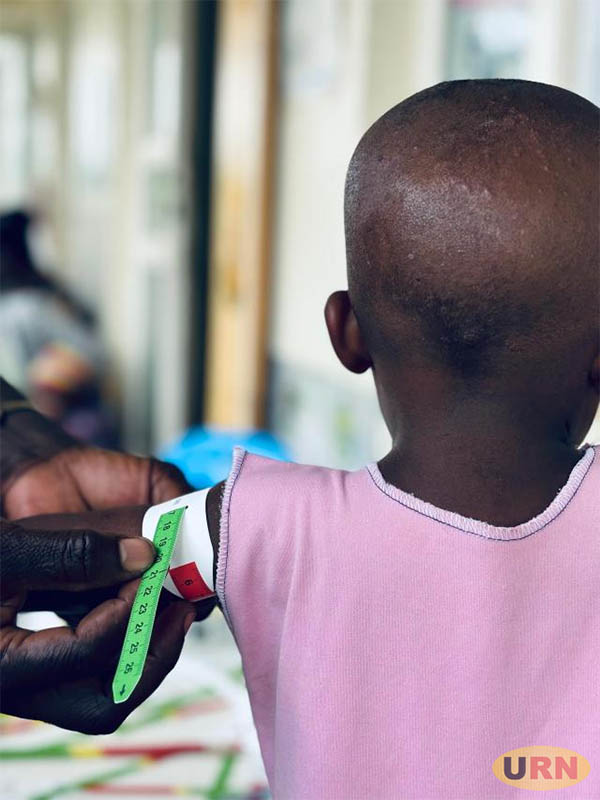Witchcraft a stumbling block in fight against malnutrition in Isingiro


Isingiro, Uganda | THE INDEPENDENT | As authorities intensify efforts to combat malnutrition, particularly among children under five, witchcraft misconceptions and other social factors continue to undermine progress in districts like Isingiro in western Uganda.
Despite significant public health campaigns, many families in the area are still attributing childhood malnutrition to witchcraft, rather than addressing the underlying nutritional deficiencies.
Dalton Babukiika, a senior nutritionist at Isingiro District, notes that in their local government, when children show signs of stunting or wasting, some community members attribute the condition to a curse or evil spell, often believed to be cast by a neighbor, relative, or even a close family member.
Babukiika explained that this belief often causes families to invest significant time and resources seeking help from traditional healers, who may offer herbal remedies, rituals, or charms, instead of pursuing proper medical care or improving their child’s diet. This delay in seeking appropriate treatment only worsens the child’s malnutrition.
He also reported that he has witnessed numerous cases of severe acute malnutrition where children are brought to the hospital only after community pressure mounts, or when the child’s condition has deteriorated to life-threatening levels. “We frequently see cases of severe malnutrition, where children are rushed to the hospital only after caregivers, under pressure from the community, realize their child is on the verge of death,” Babukiika said.
This combination of traditional beliefs, limited access to education, and inadequate healthcare resources perpetuates a cycle where malnutrition is seen not as a medical issue but as a spiritual one. As a result, many children in these communities suffer unnecessarily, as families continue to seek spiritual solutions instead of providing the proper nutritional care and medical attention.
Efforts to educate the community about the importance of proper nutrition have faced significant challenges due to these misconceptions. Annette Nyamura, a resident, explained that one reason these misconceptions persist is the limited access to modern healthcare, particularly in rural areas where education and health services are scarce.
Nyamura added that when a child shows signs of malnutrition, such as stunted growth or weight loss, many families struggle to identify the underlying causes. Instead, they seek alternative explanations that fit within their cultural beliefs, with witchcraft often seen as a convenient—though misguided—answer. “This is still a serious problem. Some people still believe that every issue is related to the spiritual realm, and it’s hard to convince them otherwise,” she said.
JohnsonTwongyeirwe, a Village health team -VHT coordinator and nutrition champion in the area, emphasizes that the lack of awareness is largely due to low education levels and inadequate sensitization among caregivers. He noted that continuous engagement with mothers and caregivers is crucial, but acknowledged that it will take time for this message to truly resonate and stick with the community.
Babukiika also reiterated the importance of tackling these misconceptions, emphasizing the need for extensive community awareness campaigns. He suggested using pictorial illustrations to visually depict the conditions of malnutrition, helping to make the issue more relatable and understandable.
Additionally, he highlighted the value of involving parents whose children have experienced severe acute malnutrition but have since recovered. These parents can serve as champions and living examples, sharing their stories and educating others in the community about the importance of proper nutrition.
While national statistics show a decline in childhood wasting from 4% in 2016 to 2.9% in 2023, Isingiro’s situation remains concerning. Data indicates that three in every ten children in Isingiro suffer from some form of malnutrition, making the district the leading contributor to malnutrition in the Ankole region, with a rate that far exceeds the national average of 27%.
Beyond the belief in witchcraft, health authorities have identified other significant drivers of malnutrition in the region. Marion Alowo, the Isingiro Assistant District Health Officer, highlighted that one major factor is child neglect. Many children are entrusted to caregivers such as grandmothers or stepmothers, who may not prioritize proper nutrition.
Alowo, who is also the district nutrition focal person added that in some cases, stepmothers deliberately withhold food from children as a form of punishment, contributing to malnutrition and stunting.
Domestic violence has also been identified as a contributing factor. Disruptions in family dynamics can have a severe impact on children’s well-being, leading to neglect or poor feeding practices. In these cases, the absence of a stable home environment exacerbates the risk of malnutrition.
Marion emphasized that the challenges faced are not only the result of misconceptions but also deeply rooted in social dynamics that complicate efforts to improve child nutrition.
She stressed that addressing nutrition requires collaboration with community development officers to support ongoing education, community engagement, and the active involvement of family members, particularly fathers and male caregivers, in tackling these issues.
Amid social challenges, authorities in Isingiro, with support from development partners like UNICEF and UKAid, continue their efforts to reduce malnutrition rates.
They recognize the critical importance of overcoming deeply ingrained beliefs and social factors that hinder progress in improving child nutrition in the area.
While the road ahead may be long, Marion and other local experts believe that sustained community education and intervention will ultimately lead to better nutrition outcomes for children in the region.
****
URN
The post Witchcraft a stumbling block in fight against malnutrition in Isingiro appeared first on The Independent Uganda:.







